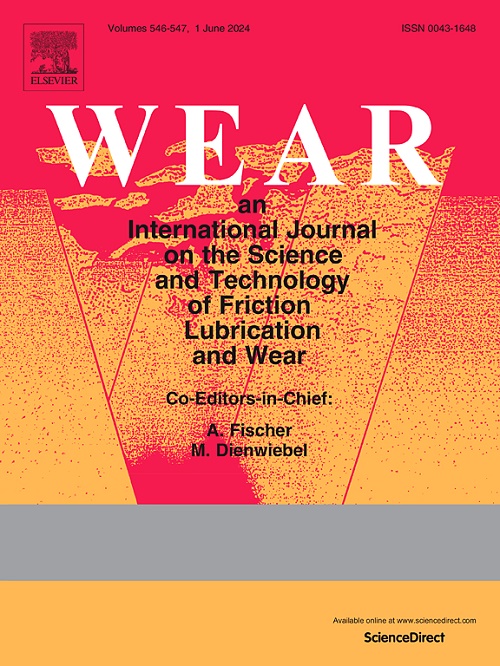Insights into vibration-induced softening effect: A thermodynamic approach
IF 5.3
1区 工程技术
Q1 ENGINEERING, MECHANICAL
引用次数: 0
Abstract
This work investigates the wear behavior of nickel-based alloy during ultrasonic vibration-assisted machining (UVAM) by combining molecular dynamics simulation and thermodynamic theory. The research reveals that the tangential force exhibits periodic variations during UVAM, with a period half of the vibration period. Tangential force and total resistance decrease due to the synergistic effect of vibration-induced softening and thermal softening. A deeper understanding of the total resistance variation during the UVAM process can be achieved by the dimensionless resistance coefficient, which is difficult for the traditional friction coefficient (CoF). The Bejan number elucidates the contributions of the thermal softening and vibration-induced softening effects in the wear process. The findings highlight that the vibration-induced softening effect dominates when adjusting the amplitude for the active control of friction. In contrast, when the frequency is modulated, the contributions of vibration-induced softening and thermal softening effects are nearly equivalent. Furthermore, the wear mode transitions with increasing vibration frequency, characterized by the Strouhal number (Srw). The vibration wear mode attains dominance when Srw > 1.88. This work provides essential theoretical guidance to gain insight into the wear behavior in UVAM to optimize the machining performance.
对振动诱导软化效应的见解:热力学方法
本研究结合分子动力学模拟和热力学理论,探讨了镍基合金在超声振动辅助加工(UVAM)过程中的磨损行为。研究发现,切向力在 UVAM 过程中呈现周期性变化,周期为振动周期的一半。由于振动引起的软化和热软化的协同作用,切向力和总电阻都会减小。要深入了解 UVAM 过程中的总阻力变化,可以通过无量纲阻力系数来实现,而传统的摩擦系数(CoF)很难做到这一点。贝扬数阐明了磨损过程中热软化和振动软化效应的贡献。研究结果表明,在调整振幅主动控制摩擦时,振动诱导的软化效应占主导地位。相反,当调节频率时,振动软化效应和热软化效应的贡献几乎相等。此外,磨损模式会随着振动频率的增加而转变,以斯特劳哈尔数(Srw)为特征。当 Srw > 1.88 时,振动磨损模式占主导地位。这项工作提供了重要的理论指导,有助于深入了解 UVAM 中的磨损行为,从而优化加工性能。
本文章由计算机程序翻译,如有差异,请以英文原文为准。
求助全文
约1分钟内获得全文
求助全文
来源期刊

Wear
工程技术-材料科学:综合
CiteScore
8.80
自引率
8.00%
发文量
280
审稿时长
47 days
期刊介绍:
Wear journal is dedicated to the advancement of basic and applied knowledge concerning the nature of wear of materials. Broadly, topics of interest range from development of fundamental understanding of the mechanisms of wear to innovative solutions to practical engineering problems. Authors of experimental studies are expected to comment on the repeatability of the data, and whenever possible, conduct multiple measurements under similar testing conditions. Further, Wear embraces the highest standards of professional ethics, and the detection of matching content, either in written or graphical form, from other publications by the current authors or by others, may result in rejection.
 求助内容:
求助内容: 应助结果提醒方式:
应助结果提醒方式:


